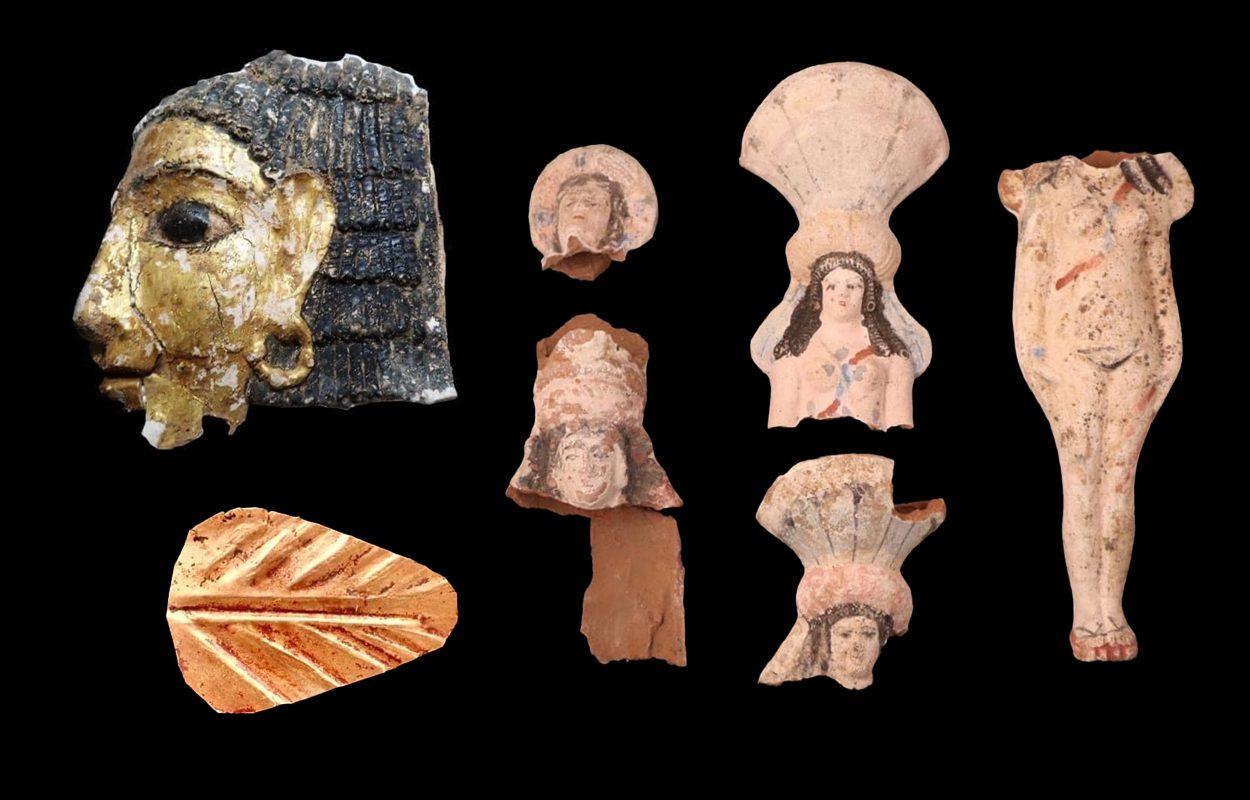Archaeologists have uncovered several high-status Ptolemaic and Roman tombs during excavations in the city of Al Bahnasa, located in Egypt’s Minya governorate.
According to a press release issued by the Ministry of Tourism and Antiquities, excavations were conducted by the University of Barcelona, working with the Ancient Near East Institute at the Upper Cemetery of El-Bahnasa.

The tombs are carved directly into the bedrock and date to the Ptolemaic and Roman eras, providing a unique insight into the ongoing tradition of burial customs and ritualistic adaptations across both periods within the cemetery.
Within the tombs are coffins, mummies, gold funerary masks, and a large number of terracotta statues that mainly depict Isis-Aphrodite wearing a wreath topped with a crown.

Isis-Aphrodite represents a facet of the revered goddess Isis, highlighting the fertility elements associated with Aphrodite. She was associated with marriage and childbirth, aligning with ancient pharaonic models, and also incorporated themes of rebirth.
The excavations also revealed mummies from the Roman period wearing gilded and painted funerary masks. Two of the mummies were found to hold golden tongues places in the mouths, a practice which was intended to ensure that the dead would be able to communicate in the afterlife and speak before the court of the Ancient Egyptian god, Osiris.

Archaeologists have found similar burial practices across Egypt, such as the Feb 2021 discovery at the Taposiris Magna temple in Alexandria, or in Dec 2021 at the archaeological site of Oxyrhynchus, near the modern-day town of El Bahnasa.

According to the D. Hassan Amer from the University of Cairo, the team also found a number of stone blocks decorated with plant drawings, clusters of grapes, and depictions of animals and birds such as pigeons and cobras.